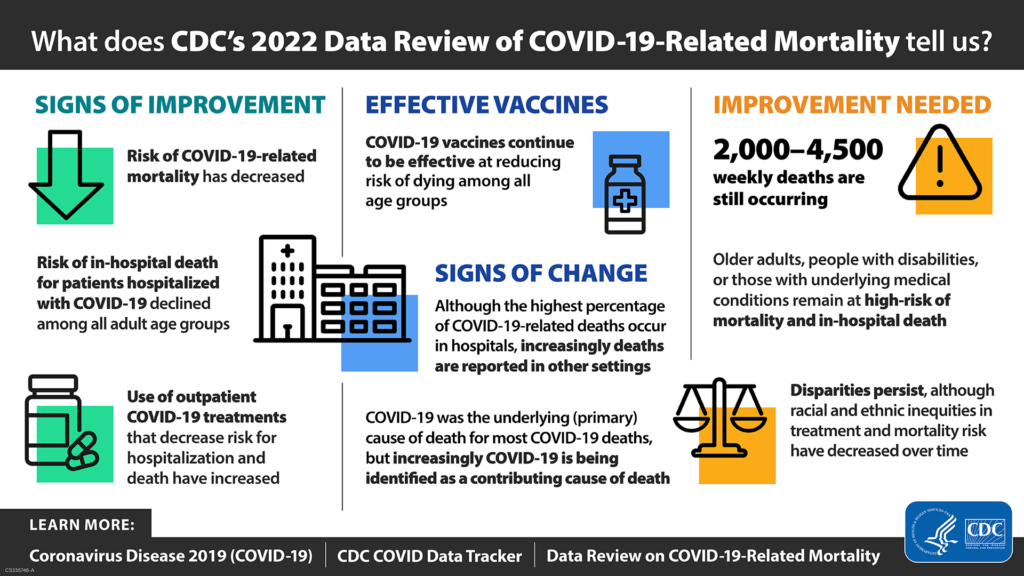Midweek Update
From the federal employment front —
- Govexec discusses the outstanding steps that must be taken before a projected 4.6% federal employee pay raise can take effect next month. The FEHBlog expects those steps to be taken.
- Reg Jones, writing in FedWeek, reviews the federal retirement process.
- Federal News Network reports that “Federal employees forced to work without pay during government shutdowns need to be made whole eventually. But the government’s late payments don’t mean those workers are entitled to damages, [the U.S. Court of Appeals for the Federal Circuit] ruled Wednesday.
From the Omicron and siblings front, the Wall Street Journal informs us
The Food and Drug Administration said a Covid-19 antibody treatment from Eli Lilly & Co. is no longer authorized for use because it isn’t likely to be effective against certain Omicron offshoots now dominant in the U.S.
The subvariants, called BQ. 1 and BQ. 1.1, now cause more than half of new Covid-19 cases in the U.S., the FDA said on Wednesday. Yet Lilly’s drug, bebtelovimab, doesn’t retain neutralizing activity against the subvariants, the company said.
“Lilly and the FDA agree that it is not medically appropriate, at this time, to treat high-risk patients with mild-to-moderate Covid-19 with bebtelovimab in the U.S.,” Lilly said.
Bebtelovimab was among the Covid-19 antibody drugs still authorized for use as a treatment for sick patients, after the FDA pulled clearances of others. Roche Holding AG’s Actemra antibody drug is also still in use as a treatment, though it wasn’t developed specifically for Covid-19.
Evusheld, an antibody drug from AstraZeneca PLC, is still cleared to prevent infections.
The FDA said other Covid-19 treatments are still expected to retain activity against BQ. 1 and BQ. 1.1, including PfizerInc.’s Paxlovid and Gilead Sciences Inc.’s Veklury.
In other public health news, STAT News tells us
With growing concern about the circulation of vaccine-derived polioviruses in the United States, the Centers for Disease Control and Prevention said Wednesday that it would work with select communities across the country to conduct wastewater surveillance for the viruses.
The launch of the initiative follows the discovery over the summer of vaccine-derived polioviruses circulating in the sewage of a number of counties in and around New York City. That discovery was made after an unvaccinated man in his 20s was partially paralyzed by polioviruses in July. Since then at least 82 genetically linked viruses have been recovered in sewage samples collected from five counties in and around New York.
The CDC said the work will start in two communities: Oakland County, Mich., and an as-yet-unnamed county in the Philadelphia area. The surveillance may later extend to other parts of the country where polio vaccination rates are low or to locations that have ties to the communities in New York state where polioviruses have been found in wastewater.
From the U.S healthcare business front —
Healthcare Dive reports
Heightened expenses, ongoing staffing shortages and fewer patient discharges have hospitals facing negative margins near the end of the year, according to Kaufman Hall’s monthly national flash report out Wednesday.
Median operating margins have been in the red for 10 consecutive months and were down 2% in October from September. Median operating margins were down 13% year over year in October, according to the report.
Total labor expenses rose 3% from September and total expenses rose 1%, while supply and drug expenses did fall slightly during the month.
In that regard, Beckers Hospital CFO Report relates
Cleveland Clinic has reported a more than $1 billion loss for the first nine months of 2022 as salaries increase and inflationary pressures mount.
The 20-hospital health system reported $469.2 million in third quarter net losses, a significant drop from $422.2 million net income last year. Cleveland Clinic’s investment returns were nearly $682 million lower for the third quarter this year than last due to “unfavorable financial markets,” according to the health system’s financial report.
In contrast, Fierce Healthcare reports
Highmark Health posted a $268 million net loss through the first nine months of 2022 as multiple headwinds drag its finances.
Highmark reported $19.5 billion in revenue, up 22% year-over-year, and $594 million in operating gain. The performance of its equity investment portfolio is a key challenge facing the integrated system, as its financial report includes $670 million in unrealized investment impact driven by a decline in the portfolio.
Saurabh Tripathi, chief financial officer and treasurer of Highmark Health, told Fierce Healthcare that Hihghmark expects to turn that unrealized impact around as the market improves.
Other major headwinds include ongoing supply chain issues, inflation and high labor costs, particularly at its Allegheny Health Network health system. Strong performance at its health plan arm is helping to bolster AHN as it weathers these challenges that providers nationwide are staring down.
“This is where the strength of our portfolio comes in,” Tripathi said. “The insurance side is helping offset those pressures.”
Ah, the benefits of diversification.
From the medical research and development front,
- The NIH HEAL Project Initiative’s Director delves into HEAL’s research on preventing opioid addiction.
- BioPharma Dive examines “What to make of Eisai and Biogen’s latest Alzheimer’s drug data.” Given the FEHB Program’s demographics, FEHB carriers should keep an eye on this drug which is bound to be an expensive hot seller if the manufacturers can overcome the blowback from their Aduhelm failure.









